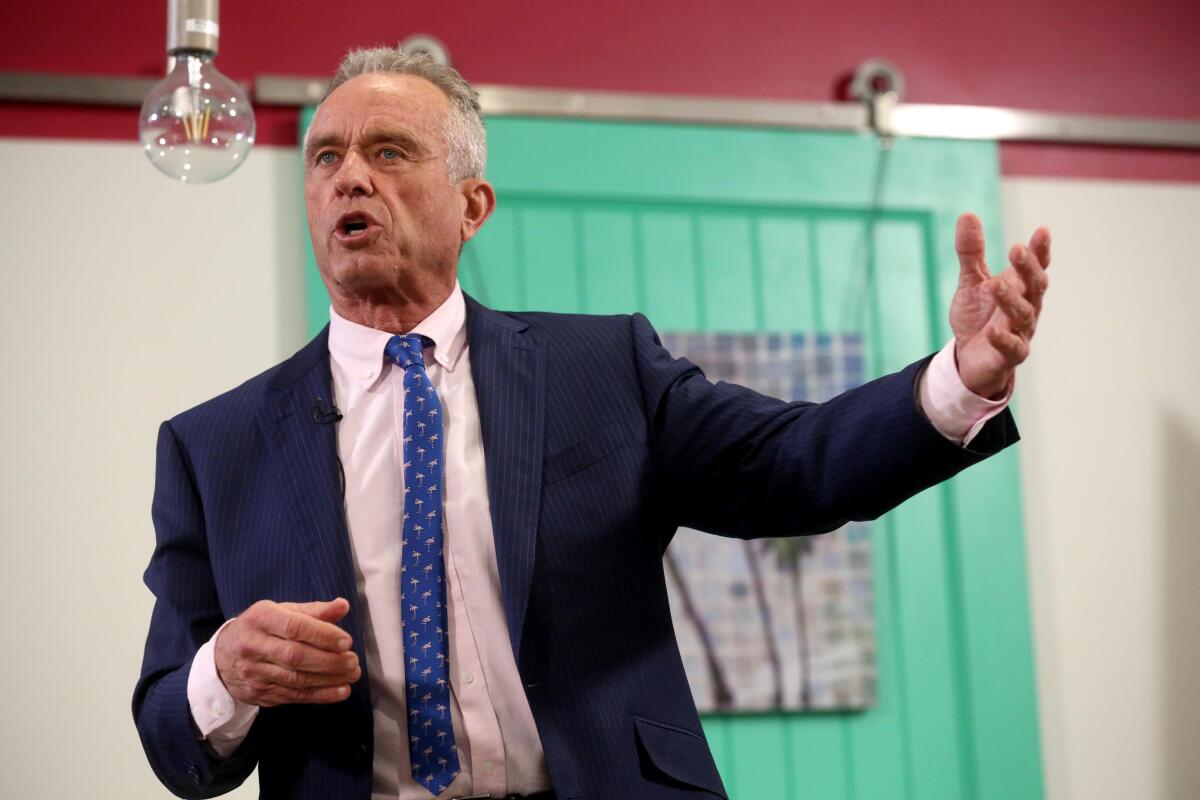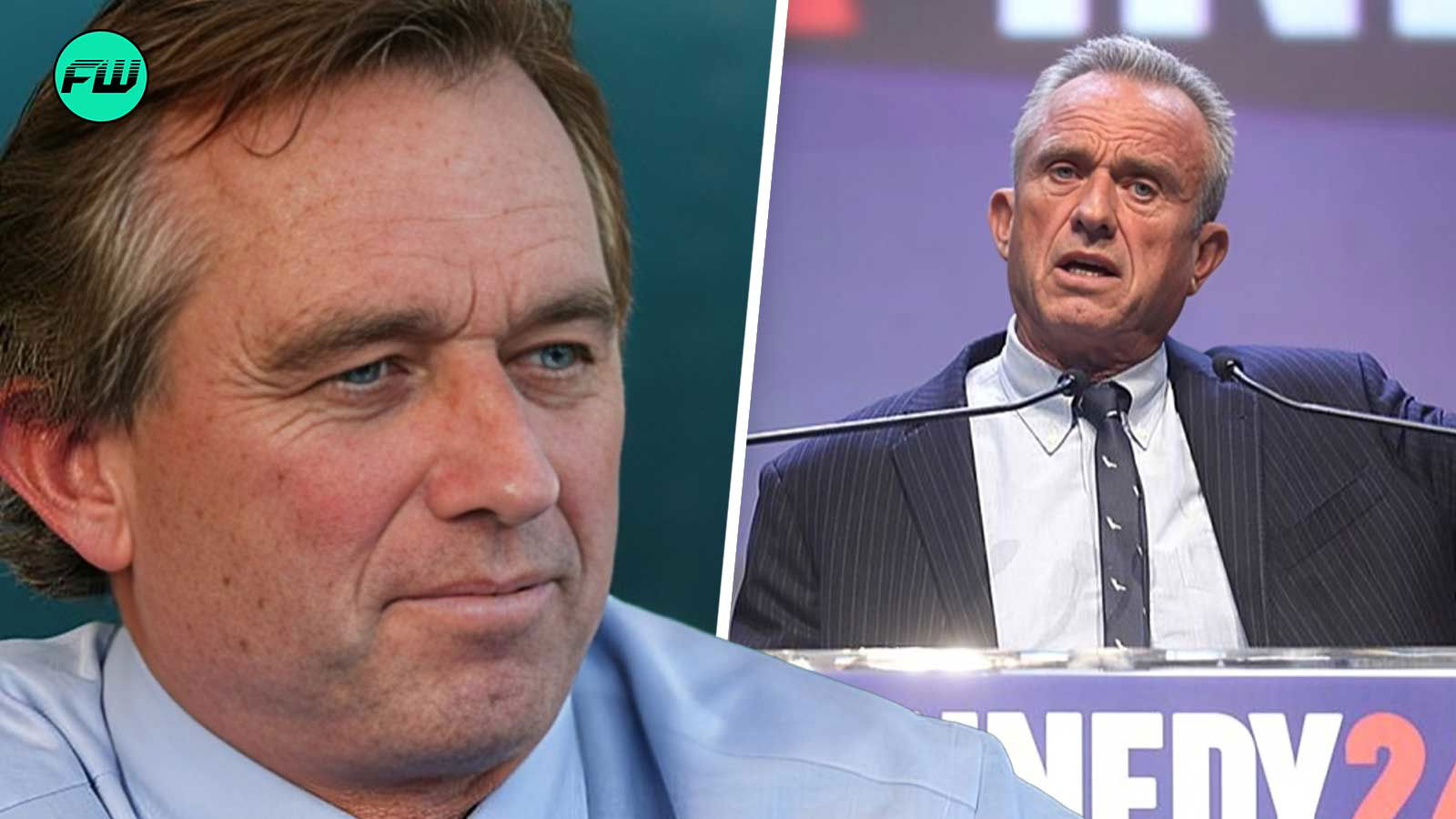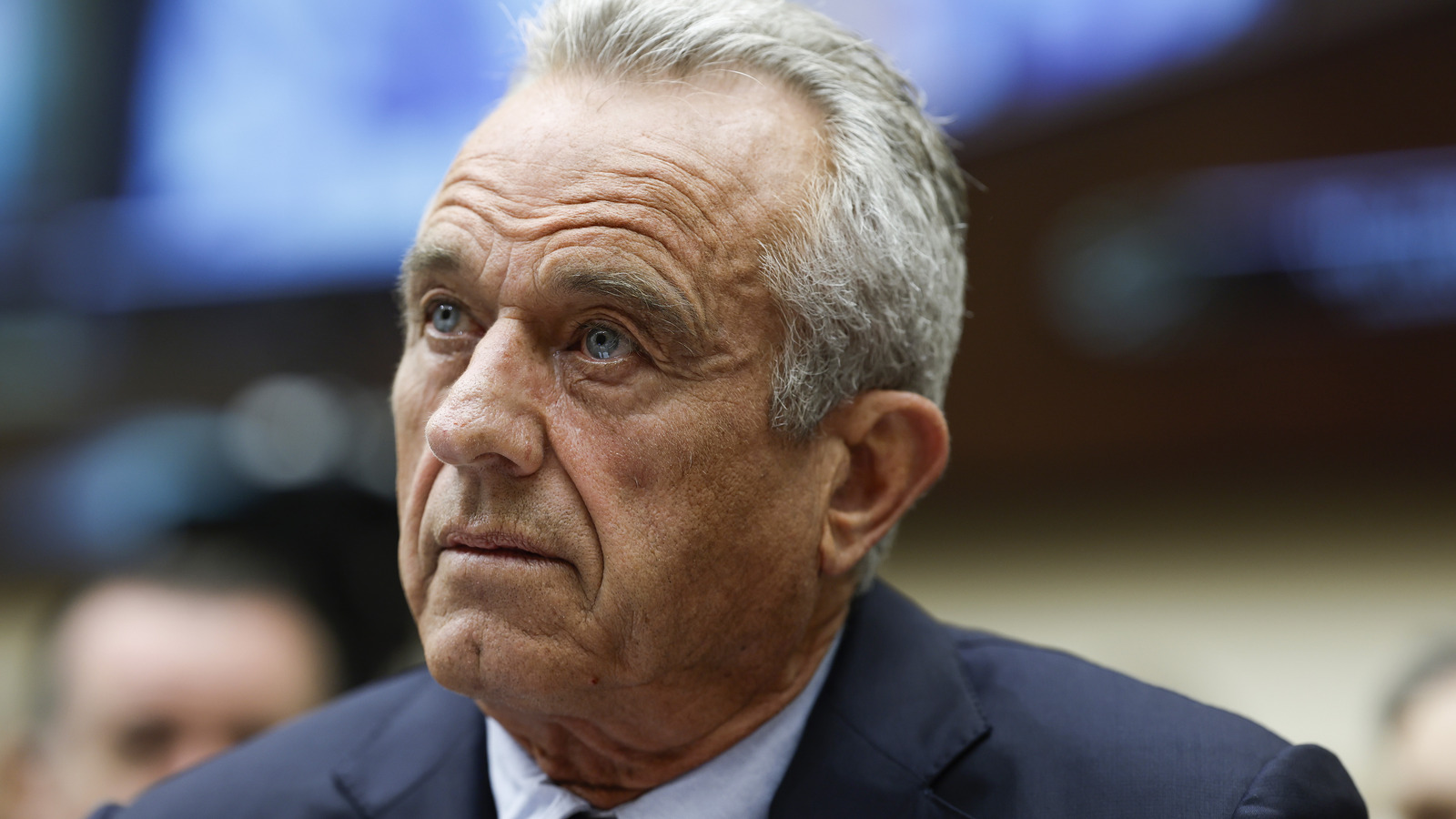Robert F. Kennedy Jr.'s voice has become a focal point of public discussion, sparking curiosity and questions among many. What happened to RFK Jr.'s voice, once described as strong and commanding, now carries a distinct rasp and tremor that is impossible to ignore? This article delves into the medical reality behind his unique vocal quality, exploring the neurological condition that has shaped his speech for decades and the resilience he demonstrates in navigating a very public life with this challenge.
Beyond mere curiosity, understanding the nature of his voice offers a window into a rare neurological disorder that affects countless individuals, often misunderstood or misdiagnosed. Kennedy's openness about his condition sheds light on the complexities of living with a chronic health issue in the public eye, turning a perceived vocal peculiarity into an opportunity for greater awareness and empathy.
Table of Contents
- Understanding RFK Jr.'s Voice: A Public Fascination
- The Medical Explanation: Spasmodic Dysphonia
- RFK Jr.'s Journey with Spasmodic Dysphonia
- Treatment and Management: A Lifelong Battle
- Robert F. Kennedy Jr.: A Brief Biography
- Spasmodic Dysphonia: Raising Awareness
- Dispelling Misconceptions and Fostering Empathy
- Conclusion
Understanding RFK Jr.'s Voice: A Public Fascination
For anyone who has listened to Robert F. Kennedy Jr. speak, particularly in recent years as he has taken on a more prominent role in public life, his distinctively strained, quivering voice is immediately noticeable. Whether it's during a campaign rally, a television interview, or a confirmation hearing, his halting, gruff speaking voice, which at times can make him hard to understand, has become a topic of widespread discussion. This isn't merely a matter of vocal preference or style; it’s a direct manifestation of a medical condition that has impacted him for decades. The curiosity surrounding what happened to RFK Jr.'s voice is not just about a sound; it's about understanding the person behind the voice and the challenges he navigates.
The sound of Robert F. Kennedy Jr.’s voice has frequently been in the news, drawing attention during critical moments, such as his confirmation hearing as President Donald Trump's nominee to lead the U.S. Department of Health and Human Services. Many were curious about his raspy quiver, a vocal quality that stood out against the backdrop of official proceedings. As he stepped into the political spotlight as a democratic presidential candidate, the question of "what happened to RFK Jr.'s voice" became even more prevalent, prompting him to address it directly and openly. This public acknowledgment has been crucial in demystifying a condition that often goes unrecognized.
The Medical Explanation: Spasmodic Dysphonia
The answer to what happened to RFK Jr.'s voice lies in a rare neurological disorder called spasmodic dysphonia. This condition is far more complex than a simple sore throat or vocal strain; it directly impacts the intricate muscles responsible for producing speech. Kennedy himself has been public about being diagnosed with spasmodic dysphonia, explaining that he has suffered from this condition for decades.
What is Spasmodic Dysphonia?
Spasmodic dysphonia is a neurological condition that specifically affects the vocal cords, causing them to spasm involuntarily. These spasms disrupt the normal flow of speech, leading to a strained, shaky, or even strangled sound. Imagine trying to speak while your vocal cords are constantly fighting against each other, or suddenly clamping shut. That's a glimpse into the daily reality for someone with this disorder. The muscles that generate a person’s voice go into periods of spasm, making clear and consistent vocalization a significant challenge.
- Brianne Howey
- Alanna Selling Sunset
- Teen Mom The Next Chapter
- Bill Belichick Linda Holliday
- Kimberly Guilfoyle Wedding Date
This condition is not just about a "raspy voice"; it manifests in various ways, often making the voice sound gravely, weak, or broken. For RFK Jr., his voice tends to sit on a vocal fry and can quiver unexpectedly, sometimes giving the impression that he is overcome with emotion, even when he is not. It's a testament to the unpredictable nature of spasmodic dysphonia, where the voice can fluctuate in quality and clarity from one moment to the next, making sustained, fluid speech a considerable effort.
RFK Jr.'s Journey with Spasmodic Dysphonia
Robert F. Kennedy Jr. has been remarkably candid about his personal experience with spasmodic dysphonia, offering insights into its onset and progression. He shared in an interview with the Los Angeles Times that he used to have an unusually strong voice. However, this began to worsen in the late 1990s. Specifically, Kennedy has said he first noticed a change in his voice in 1996, when he was 42 years old. It was around this time that he was diagnosed with spasmodic dysphonia, a diagnosis that explained the puzzling and increasingly difficult changes in his vocal quality.
His experience highlights a common trajectory for many with this condition: an initial period of confusion and concern as their voice changes, followed by the clarity of a diagnosis. For RFK Jr., this meant coming to terms with a chronic neurological disorder that would forever alter his speech. He recalled having a strong voice until his 40s when his spasmodic dysphonia began to manifest, transforming his once clear voice into the distinctive sound we hear today.
Symptoms and Public Perception
The symptoms of spasmodic dysphonia, as experienced by RFK Jr., are quite evident to the public. People notice that his voice sounds gravely, raspy, weak, broken, and often "strangled." This is the direct result of the involuntary spasms of his vocal cords. During his confirmation hearing and other public appearances, his voice has been described as having a raspy, strained quality, sometimes making him hard to understand. This vocal characteristic, while a medical reality for him, has inevitably become a part of his public persona.
In an April 2024 article in the Los Angeles Times, Kennedy candidly admitted that he "can't stand" his voice. This reveals the profound personal impact of living with such a condition, especially for someone whose profession demands constant public speaking. Despite the challenges and his personal feelings about his voice, he continues to engage in high-profile public discourse, demonstrating remarkable resilience and determination. His transparency about his condition not only answers the question of what happened to RFK Jr.'s voice but also fosters a deeper understanding of the struggles faced by individuals with voice disorders.
Treatment and Management: A Lifelong Battle
Living with spasmodic dysphonia is a lifelong journey, as the condition is not curable. However, it is manageable, and Robert F. Kennedy Jr. has been open about the treatments he undergoes to alleviate his symptoms. The most common and effective treatment for spasmodic dysphonia, which Kennedy uses, is Botox injections. These injections are administered directly into the tiny muscles of the vocal cords. The Botox temporarily weakens these muscles, reducing the spasms and allowing for a smoother, less strained voice.
Kennedy has stated that he treats his disorder with Botox injections, a common and widely accepted treatment. While Botox can significantly improve speech quality, its effects are temporary, typically lasting for a few months, meaning regular injections are necessary to maintain vocal function. He has also mentioned trying surgery to improve his speech, indicating the extent to which he has sought solutions for his condition. Despite these efforts, the fundamental nature of spasmodic dysphonia means it remains a persistent challenge, requiring ongoing management rather than a definitive cure.
His commitment to managing his condition, despite its incurable nature, underscores the dedication required for individuals living with chronic neurological disorders. It also highlights the importance of ongoing medical research and support for those affected by rare voice conditions, ensuring that effective treatments continue to be developed and refined.
Robert F. Kennedy Jr.: A Brief Biography
Robert F. Kennedy Jr. carries a name that most certainly bears the weight of a powerful and tragic family legacy. As the third child of Robert F. Kennedy and nephew to Senator Ted Kennedy and former President John F. Kennedy, politics is almost part of his DNA. Born into one of America's most prominent political families, his life has been shaped by public service, environmental advocacy, and, more recently, a controversial foray into presidential politics.
Beyond his political aspirations, Kennedy has long been known as a dedicated environmental lawyer and activist. He has played a pivotal role in numerous environmental causes, advocating for clean water, renewable energy, and the protection of natural resources. His work in this field has earned him respect and recognition, showcasing a different facet of his public life before his recent shift towards presidential candidacy.
His family history, marked by both immense influence and profound tragedy, has undoubtedly shaped his worldview and public persona. The data mentions the loss of two younger brothers: David died at age 28 of a heroin overdose in 1984, and Michael died in 1997 in a skiing accident in Aspen, Colorado, while on the slopes with family members. These personal losses, coupled with the assassinations of his father and uncle, underscore a life lived under extraordinary circumstances, adding layers of complexity to his public identity and resilience.
Personal Data: Robert F. Kennedy Jr.
| Full Name | Robert Francis Kennedy Jr. |
| Date of Birth | January 17, 1954 |
| Place of Birth | Washington, D.C., U.S. |
| Parents | Robert F. Kennedy (father), Ethel Skakel Kennedy (mother) |
| Notable Relatives | John F. Kennedy (uncle), Ted Kennedy (uncle) |
| Siblings | 10 siblings (including David and Michael, who passed away) |
| Profession | Environmental Lawyer, Author, Activist, Politician |
| Political Affiliation | Independent (formerly Democratic) |
Spasmodic Dysphonia: Raising Awareness
Robert F. Kennedy Jr.'s public battle with spasmodic dysphonia serves as a powerful platform for raising awareness about this rare voice condition. While his voice has become a topic of discussion due to his political prominence, it also brings much-needed attention to a disorder that affects far more people than we might think, yet often remains misunderstood or undiagnosed. His openness helps to demystify spasmodic dysphonia, moving it from the realm of a peculiar vocal quirk to a recognized medical condition requiring empathy and understanding.
Organizations dedicated to finding answers for rare voice conditions, such as the one mentioned in an open letter to MSNBC, hope that the public's questions about RFK Jr.'s voice will help bring understanding to this rare voice condition. His story is not one of weakness but of profound resilience. It highlights the challenges faced by individuals whose ability to communicate effectively is compromised by an invisible neurological disorder. By speaking out, Kennedy not only addresses the curiosity surrounding what happened to RFK Jr.'s voice but also becomes an accidental advocate, fostering a greater public consciousness about voice disorders and the importance of supporting research and treatment for them.
This increased visibility is vital for those living with spasmodic dysphonia, who often face frustration, social anxiety, and professional hurdles due to their vocal challenges. When a prominent figure like RFK Jr. shares his experience, it validates the struggles of others and encourages a more informed and compassionate public discourse around such conditions.
Dispelling Misconceptions and Fostering Empathy
The distinctive sound of Robert F. Kennedy Jr.'s voice, while a result of a medical condition, can sometimes lead to misinterpretations or unwarranted judgments. Without knowledge of spasmodic dysphonia, observers might mistakenly attribute his strained or quivering voice to nervousness, emotional instability, or even a lack of conviction. This highlights a crucial need for dispelling misconceptions and fostering empathy towards individuals with voice disorders.
His voice, which can sometimes make him hard to understand, is not a choice or a performance; it is a symptom. Recognizing this fundamental truth is the first step towards a more empathetic response. Instead of focusing on the sound as a distraction or a flaw, understanding its neurological basis allows for a deeper appreciation of the effort and determination required for someone like RFK Jr. to engage in demanding public roles. It underscores the strength it takes to speak out, literally and figuratively, when one's primary tool for communication is compromised.
By openly discussing what happened to RFK Jr.'s voice, he encourages a shift in perspective. It moves the conversation from superficial observation to informed understanding, prompting us to look beyond the immediate presentation and consider the underlying human experience. This empathy extends not just to public figures but to anyone living with a visible or invisible condition that affects their daily interactions, reminding us of the importance of compassion and informed awareness in our increasingly interconnected world.
Conclusion
The journey to understand what happened to RFK Jr.'s voice leads us to a fascinating and often overlooked neurological condition: spasmodic dysphonia. His experience, spanning decades since his diagnosis at age 42, illustrates the persistent challenges of living with a disorder that affects one's primary means of communication. From his initial strong voice to the raspy, strained sound we hear today, Kennedy's vocal transformation is a direct consequence of this condition, managed through treatments like Botox injections, yet remaining incurable.
Beyond the medical explanation, RFK Jr.'s openness about his voice serves a larger purpose. It shines a spotlight on spasmodic dysphonia, raising awareness for a rare disorder that deserves more understanding and research. His resilience in navigating a public life, from environmental advocacy to presidential candidacy, despite the constant effort required to speak, is truly commendable. His story is a powerful reminder that behind every public figure, there's a human being facing unique challenges, and that empathy and informed understanding are invaluable. We encourage you to share this article to help spread awareness about spasmodic dysphonia and foster a more compassionate understanding of those who live with voice disorders. What are your thoughts on how public figures can help raise awareness for such conditions? Leave a comment below!


